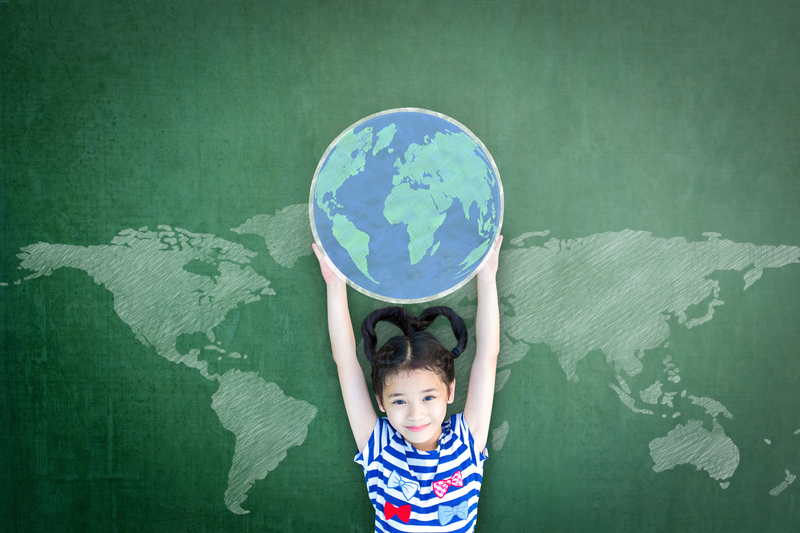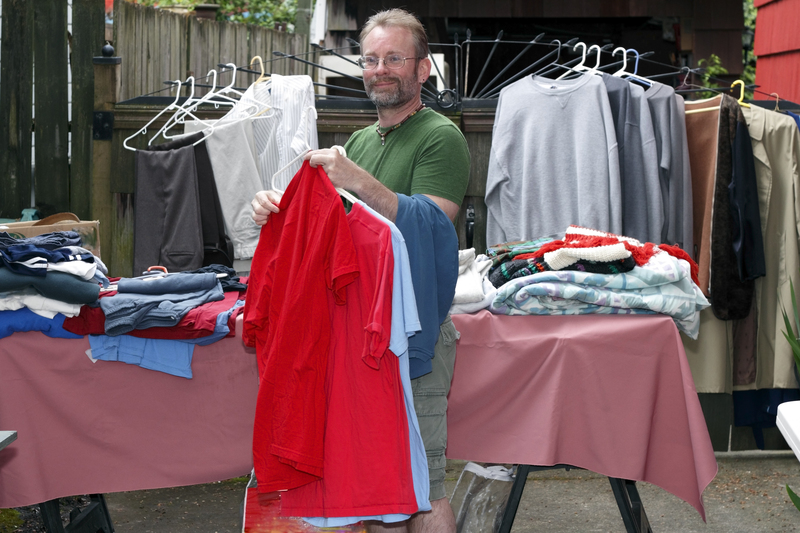Collaborative Efforts to End Microplastic Pollution: Building a Cleaner Tomorrow
Microplastic pollution is one of the most pressing environmental challenges facing our planet today. These tiny plastic particles, less than 5 mm in size, infiltrate our rivers, oceans, soil, and even the air we breathe. While their size makes them nearly invisible, their impact is enormous--disrupting marine ecosystems, entering the food chain, and posing risks to human health. Ending microplastic pollution requires a united global approach. In this article, we will explore the vital importance of collaborative efforts to end microplastic pollution, highlight the main sources, discuss successful initiatives, and share actionable ways in which stakeholders can work together for cleaner ecosystems.

Understanding Microplastic Pollution: What Are Microplastics?
Microplastics are tiny pieces of plastic debris that originate from a variety of sources. These plastics are persistent in the environment, and their small size allows them to travel far and wide. To address the issue, it's vital to comprehend where microplastics come from, how they spread, and why they are so harmful. Let's break it down:
- Primary microplastics: Intentionally manufactured tiny plastics, such as microbeads in personal care products and pellets (nurdles) used in industrial manufacturing.
- Secondary microplastics: Result from the breakdown of larger plastic items like bottles, bags, and fishing nets due to sunlight, wave action, and other environmental factors.
- Microfibers: Shed from synthetic textiles (like polyester and nylon clothing) during washing and enter the water system.
Why Are Microplastics a Global Crisis?
Microplastics pollute virtually every corner of our globe. They have been found at the top of Mount Everest, in Arctic ice cores, and in the deep sea. Their persistence and ubiquity mean that addressing the problem demands global, cross-sectoral collaboration.
These particles harm wildlife--fish, seabirds, turtles, and even plankton mistake them for food. As these organisms are consumed up the food chain, the plastics (and the toxins they absorb) end up on our plates. Furthermore, microplastics have entered human bodies, with researchers detecting them in human blood and organs. The true scale of the threat is still being studied, but urgent action is needed.
Why Collaboration Is Crucial in Combating Microplastic Pollution
No single country, company, or individual can solve the microplastics crisis alone. Collaboration is essential to coordinate research, harmonize regulations, develop innovative solutions, and drive global change. Here's why collaborative action matters:
- Transboundary Spread: Microplastics travel long distances via water and wind, making it a shared problem among nations.
- Shared Innovation: Pooling resources and expertise accelerates the discovery of new technologies and alternatives.
- Unified Advocacy: Collective campaigns amplify the message, increasing public awareness and corporate responsibility.
- Policy Alignment: International agreements can standardize bans and restrictions, limiting market loopholes.
Who Are the Key Players in Ending Microplastic Pollution?
Many groups are joining forces to eliminate microplastics. These include:
- Governments: Legislating plastic bans and supporting research.
- NGOs & Environmental Organizations: Raising awareness, running cleanups, and pressuring decision-makers.
- Researchers & Academia: Uncovering the sources, pathways, and impacts of microplastics and innovating solutions.
- Corporations: Developing sustainable alternatives and reducing plastic use in products and processes.
- Civil Society: Advocating for change, participating in cleanups, and adopting eco-friendly habits.
Global Collaborative Initiatives Combating Microplastic Pollution
1. International Treaties and Agreements
The fight against microplastics is gaining momentum at the international level. A landmark achievement was the United Nations Environment Assembly's decision in 2022 to develop a legally binding treaty to end plastic pollution, including microplastics. This treaty engages 175 countries and is poised to become a global game-changer.
- The Basel Convention: Controls the transboundary movement of hazardous wastes, including certain plastics, pushing for better waste management worldwide.
- G7 and G20 Action Plans: Leading economies are working collectively on prevention strategies for marine litter and microplastics, sharing best practices and setting ambitious targets.
- EU Plastics Strategy: The European Union's plan targets single-use plastics, restricts microbeads, and invests in circular economy innovations.
2. Joint Research and Knowledge Sharing
Research alliances are shining a light on the sources, flows, and impacts of microplastics.
- Global Partnership on Marine Litter (GPML): Supported by the UN Environment Programme, this network connects governments, scientists, and civil society to drive joint solutions against marine litter, including microplastics.
- International Pellet Watch: This global initiative tracks plastic pellet contamination in coastal waters, helping to map pollution hotspots.
- Horizon 2020 Innovation Projects: The European Commission funds dozens of collaborative research projects to limit microplastics entering the environment.
By sharing open-access data and methodologies, these collaborations help countries learn from one another, avoid duplication, and accelerate progress.
3. Corporate Partnerships and Industry Change
Many businesses are stepping up via private-public partnerships, pledging to:
- Eliminate microplastics: Phasing out microbeads in personal care products, with giants like Unilever and Johnson & Johnson leading the way.
- Rethink materials: Innovating with biodegradable alternatives for packaging, textiles, and consumer goods.
- Support cleanups and circularity: Funding infrastructure for better waste management and recycling.
Examples include the New Plastics Economy Global Commitment, where hundreds of companies collaborate on rethinking how plastics are designed, used, and reused.
4. Non-Governmental Organizations, Community Actions & Citizen Science
NGOs like Plastic Pollution Coalition, Surfrider Foundation, and Oceana bridge gaps between policy, industry, and communities. They run campaigns to:
- Educate the public on the hidden dangers of microplastic pollution
- Mobilize volunteers for river and beach cleanups--removing tons of plastic waste before it breaks into microplastics
- Utilize citizen science apps such as Marine Debris Tracker to crowdsource data on plastic hotspots worldwide
When communities come together, they build a sense of ownership and drive real grassroots change.
Successful Case Studies: United Action Against Microplastics
1. The BAN on Microbeads in Cosmetics (UK, USA, Canada, and More)
One of the first victories in the fight against microplastic pollution was the targeted ban of plastic microbeads. Across the UK, USA, Canada, and several other nations, collaborative lobbying by environmental NGOs, rigorous scientific research, and consumer advocacy led lawmakers to ban the use of microbeads in rinse-off cosmetics and personal care products. This multi-stakeholder action set a precedent for future regulation.
2. The "Stop Ocean Plastics" ASEAN Initiative
Southeast Asia is a source of significant marine plastic leakage. Through the ASEAN Regional Action Plan, ten member states work together to reduce plastic waste leakage and foster innovation in collection and recycling. Efforts are supported by international partners--including the World Bank and Japanese Government--showcasing how global collaboration can empower regional solutions.
3. The Clean Rivers Trust - Citizen Science in the UK
Empowering communities has led to the mapping of microplastic hotspots across British rivers. By engaging schools, local authorities, and businesses, the trust assists in policy-making and cleanup prioritization. Crowdsourced data makes monitoring possible at a scale unreachable by government alone.
Barriers to Collaboration: What's Holding Us Back?
Despite growing momentum, several challenges hinder effective collaboration in ending microplastic pollution:
- Lack of universal standards: Inconsistent definitions and methodologies impede comparing data and setting unified targets.
- Regulatory patchwork: Differences in national laws allow pollution to shift to less regulated regions.
- Limited data: Many countries lack robust microplastic monitoring systems or underfund scientific research.
- Industrial resistance: Some sectors push back against stricter controls, citing costs and feasibility.
Overcoming these obstacles will require dialogue, transparency, and an evidence-driven approach.
How Individuals and Communities Can Contribute
You don't need to be a policymaker or multinational CEO to make a difference. Every action counts. Here's how you can support joint efforts to reduce microplastic pollution:
- Choose natural fibers: Opt for clothing made with cotton, linen, and wool instead of synthetics.
- Support bans on microplastics: Petition local governments and shopping for microbead-free products makes a difference.
- Reduce single-use plastics: Carry reusable bags, bottles, and containers.
- Treat washing machine effluent: Use filters to capture microfibers before they enter waterways.
- Join local cleanup events: Participate in beach or river cleanups as part of community action groups.
- Spread awareness: Use your voice on social media and within your community.
By collaborating with others--friends, family, colleagues, and neighbors--you exponentially increase your impact.

The Role of Innovation and Technology in Collaborative Solutions
Technology and innovation are vital tools for collaboration in the war on microplastics. Exciting developments include:
- Washing pod filters: Devices attached to washing machines that capture microfibers before they enter drains.
- Bioplastics: Plant-based polymers that break down naturally, reducing future microplastic generations.
- Ocean-cleaning robots: Autonomous devices that detect and remove microplastics from waterbodies.
- Blockchain for recycling: Creating transparent supply chains for plastics, ensuring accountability.
Collaborative tech incubators and hackathons, often involving governments, academia, and corporations, help fast-track these innovations from concept to reality.
The Way Forward: Joining Forces for Microplastic-Free Futures
Microplastic pollution knows no borders, and neither should our solutions. Ending this crisis demands that all of us--governments, companies, scientists, and citizens--join forces through information-sharing, coordinated policy, and relentless innovation.
Key actions to accelerate collaborative progress:
- International standardization: Set global monitoring and reporting standards for microplastics.
- Integrate policy and funding: Align policies, incentivize research, and fund scalable solutions.
- Education and outreach: Invest in public awareness campaigns and community science programs.
- Promote sustainable alternatives: Support research, adoption, and subsidies for eco-friendly materials.
Conclusion: The Power of Collaborating to End Microplastic Pollution
Ending microplastic pollution is an immense challenge, but not insurmountable--especially when we harness the collective power of global collaboration. Every ban, innovation, and grassroots initiative brings us closer to a world where our waters, wildlife, and communities are free from the threat of microplastics. Together, we can make a difference.
Will you take the next step and join the collaborative fight against microplastic pollution?